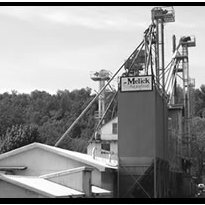Aquaculture contributes to global food security but sustainable aquaculture development, in terms of biodiversity impacts, requires the establishment of viable solutions in replacement of the fisheries-based components in aquafeeds. Novel sustainable sources of high-quality proteins and long chain n-3 polyunsaturated fatty acid (n-3 LC-PUFA) rich oils are needed as feed grade fisheries resources exploited for fish oil and fishmeal production reach sustainability limits.
Alltech, together with Norwegian researchers, grew pit-tagged Atlantic salmon, from freshwater (18 g body weight) to seawater in tanks (up to 800 g body weight), on diets with low fish meal (FM) (10%) and 1–1.25% total n-3 LC-PUFA levels balanced across the experimental diets. Dietary n-3 LC-PUFAs were supplemented by fish oil (FO), Schizochytrium limacinum biomass (ScB) or a mix of the two (FO/ScB). Further, the fish from all treatments were mixed and redistributed in sea cages reared to slaughter (ca. 3 kg body weight) on either FO or ScB. As FO was rich in both EPA and DHA and ScB was rich in DHA and nearly devoid of EPA, the experimental diets differed significantly in DHA/EPA ratio (0.8 vs. 10.5 in average for FO and ScB, respectively).
ScB treatment fish grew to significantly higher body weight (2.8 kg vs. 3.3 kg, for FO and ScB, respectively) but similar FCR, survival rate and biometric indexes compared to the FO groups. ScB fish contained higher levels of EPA + DHA in the filet but lower in the liver, and better filet pigmentation already from the tank phase of the experiment as determined chemically, by salmonfan and a trained sensory panel and lower prevalence of melanin spots at slaughter.
The trained sensory panel found no differences in flavor or odor in the filets from the different dietary groups. However, filets in the FO group were perceived as softer and juicier compared to ScB. The pre-diets up to 800 g body weight had minor effects on fish performance. Global transcriptomics in liver and intestinal tissues revealed significant dietary effects on the expression of immune modulating, as well as ion, lipid, protein, and xenobiotic metabolism genes.
Scientists conclude that Schizochytrium limacinum biomass appears to be a good alternative source of marine omega-3 fatty acids for Atlantic salmon particularly during stressful conditions. It results in improved growth, indications of anti-inflammatory effects in the intestine based on gene expression data, and improved filet pigmentation tested both chemically and by sensory panel. It appears that S. limacinum biomass can be used in salmon feed throughout the whole production cycle from parr to slaughter without any negative effects on growth or product quality if the dietary requirement for EPA is covered.
Download full study here.













